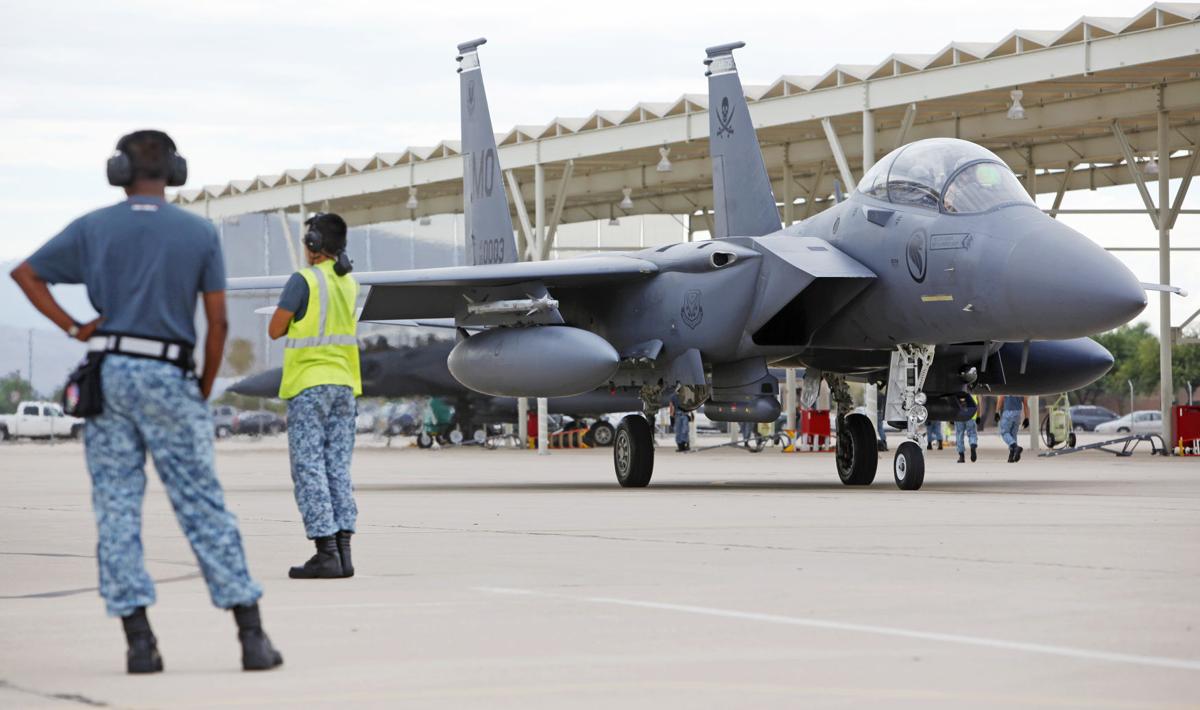Three residents of neighborhoods near Davis-Monthan Air Force Base have filed for an injunction in federal court, seeking to require the Air Force to conduct a more detailed analysis of how increased training flights from the base will affect the community.
Rita Ornelas, Gary Hunter and Anita Scales filed the complaint Friday with the U.S. District Court of Arizona, saying that the Air Force failed to follow federal guidelines when it approved a plan last year to increase the number of operations.
The Arizona Center for Law in the Public Interest, a nonprofit firm that focuses on government accountability, is representing the plaintiffs.
In May 2015, the Air Force approved an updated plan for the Total Force Training Mission for Visiting Units at D-M, which, according to the neighbors’ complaint, would almost quadruple the number of flight operations from visiting jets.
The plan would increase the number of sorties, a complete flight operation from takeoff to landing, to 2,326, the complaint says. That number would be the maximum and could be smaller, the Air Force has said.
The plaintiffs say the Air Force failed to comply with National Environmental Policy Act regulations, including an environmental-impact study of the increased operations. The plaintiffs want the court to declare the Air Force's environmental assessment inadequate and order it to conduct an Environmental Impact Statement. The lawsuit does not seek a "cessation of the TFT program."
Capt. Casey Osborne, chief of public affairs for the 355th Fighter Wing at D-M, responded Saturday: “Davis-Monthan Air Force Base fully complied with all applicable laws when conducting its Total Force Training Environmental Assessment.
At this time the Air Force will not comment on the specifics of pending litigation.
“Our airmen are privileged to be members of the local community and we pride ourselves on the strong positive relationships we share with all of our Tucson partners,” Osborne continued.
“The Environmental Assessment places a cap on the total number of annual Total Force Training flights. It should be noted that even if we reach that cap, all Total Force Training flights combined would represent less than 6 percent of the total annual D-M air field operations numbers.”
In May 2015, the Air Force Air Combat Command issued a final environmental report on the proposed expansion of visiting-plane training at Davis-Monthan, finding that raising the number of annual sorties up to 65 percent will pose no significant environmental issues.
In their court filing, the plaintiffs say the Air Force didn’t follow its own guidelines and provide proper notification to the communities that would be affected by the increased operations.
The environmental-assessment report prepared by the Air Force detailing the impact of the additional operations wasn’t distributed to all of the affected neighborhoods and wasn’t made readily available in Spanish, despite a high number of Spanish-speaking residents in the area, the complaint says.
“The (Air Force) relied almost exclusively on internet notifications and the (D-M) website, even though low income minority communities are less likely to have internet access,” according to the complaint.
The plaintiffs are alleging that the flight traffic has negatively impacted the value of their homes, located in the Julia Keen, Blenman-Elm and Broadmoor neighborhoods.
They’re also claiming emotional and physical injuries that they say the noise has caused.





